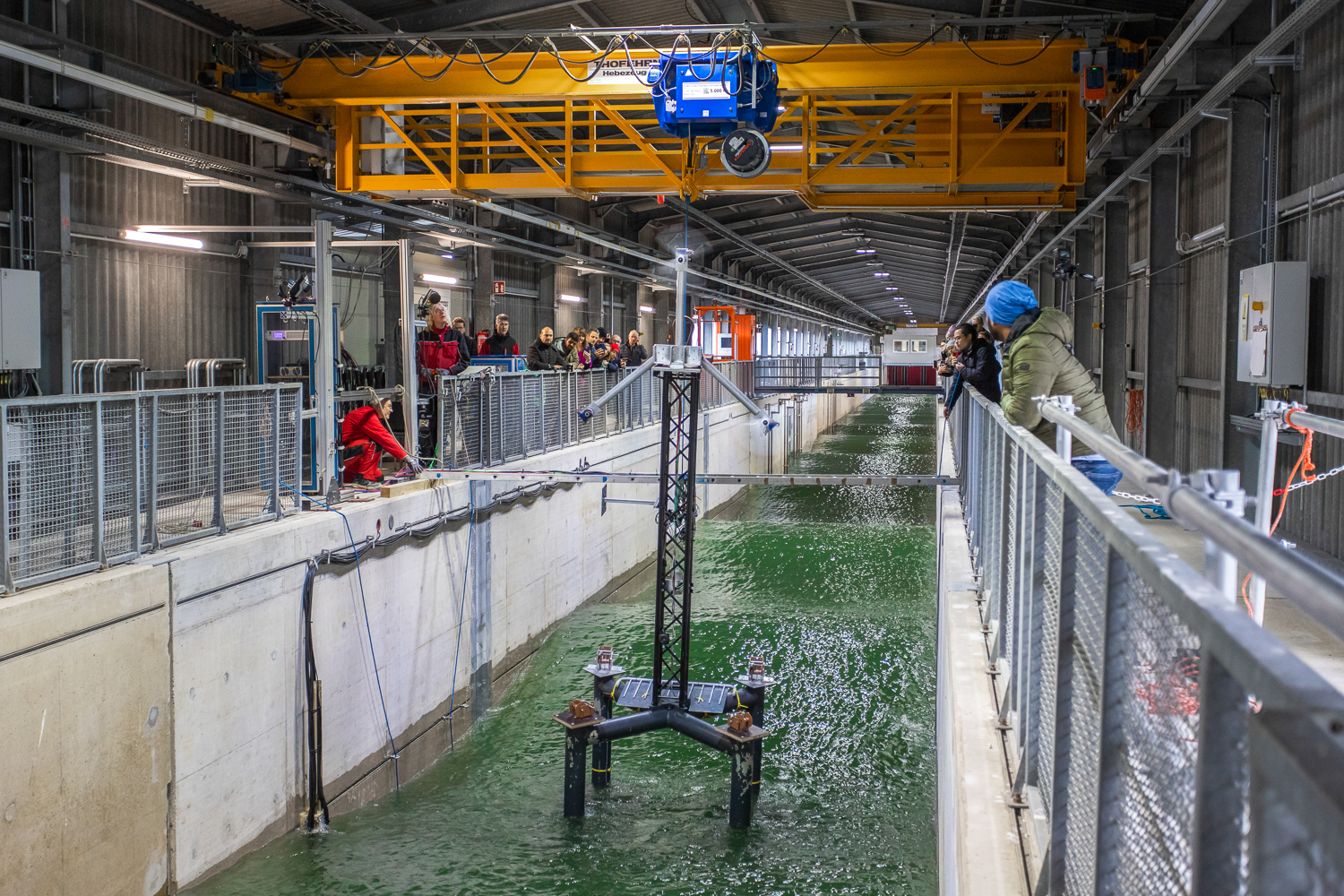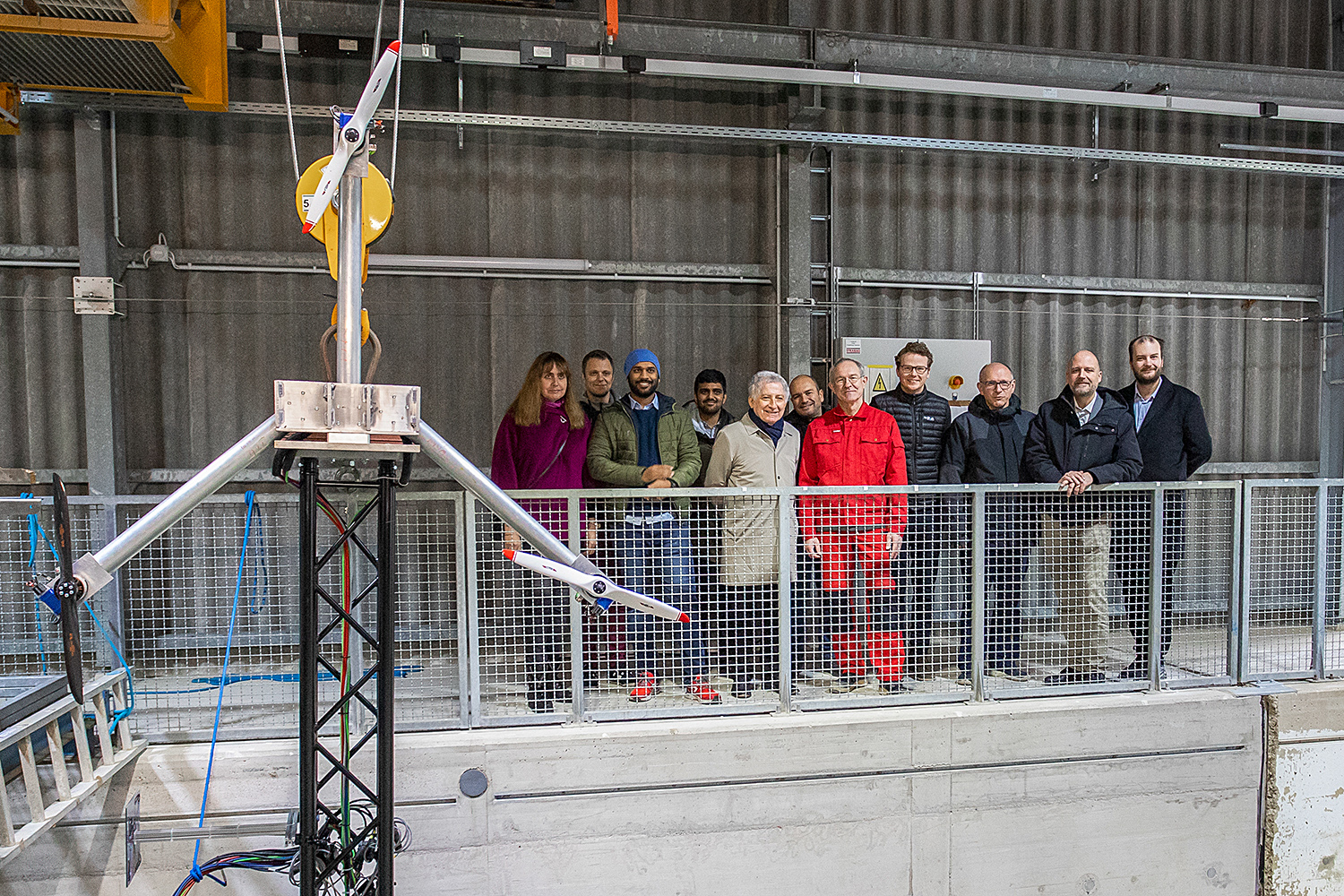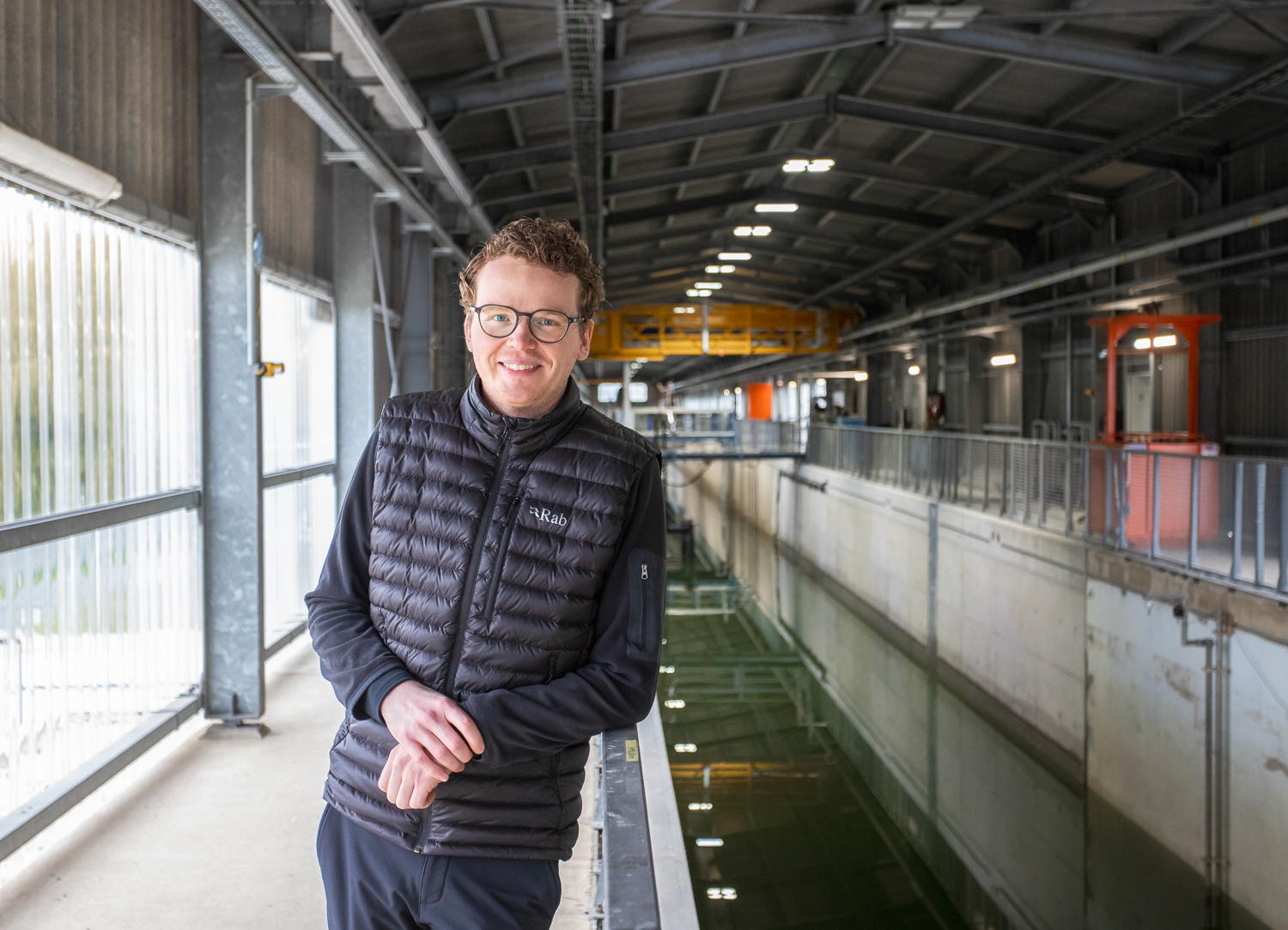Offshore wind power: When the seabed liquefies Collaborative project investigates seafloor changes in the Large Wave Current Channel
The North Sea is to become “Europe’s power station”. The countries bordering the North Sea want to build 120 gigawatts of offshore wind power by 2030 so that wind energy can make a significant contribution to the continent’s electricity supply in the future. However, the use of floating turbines poses a number of challenges, including changes to the seabed around the wind turbines. Researchers in the international collaborative project NuLIMAS, coordinated by the Leichtweiß Institute of Hydraulic Engineering at Technische Universität Braunschweig, are investigating what is known as soil liquefaction. To this end, the scientists have launched a unique experiment with a floating wind turbine in the large wave current channel in Hanover.

A floating wind turbine was placed in the channel for the experiment in the Large Wave Current Channel (GWK+) at the Coastal Research Centre in Hanover. Photo credit: Max Fuhrmann/TU Braunschweig
If offshore wind turbines are to withstand extreme conditions, they must also be optimally adapted to the conditions under water and on the seabed. This is where NuLIMAS, a joint project of TU Braunschweig and partners from Germany, Poland and Turkey, comes in. The research team is analysing the processes of soil liquefaction. This is a phenomenon that can cause even large structures – such as breakwaters – to sink into the ground during storms and lose their function. If strong wave movements affect the foundations of floating wind turbines, soil liquefaction can also occur, leading to a complete loss of load-bearing capacity. In the worst case, the entire turbine can slide away.
Floating wind turbine on a scale of 1:15
For the experiment in the Large Wave Current Channel (GWK+) at the Coastal Research Centre in Hanover, the researchers placed a floating wind turbine in the 300 metre long channel. This 1:15 scale turbine was specially manufactured from aluminium and is based on a real wind turbine from project partner GICON®. The floating structure, known as the GICON®-TLP, is connected to the foundation – a two metre by two metre, 50 centimetre high concrete element – via four mooring lines. “Experiments of this kind on this scale have never been carried out on floating structures before,” says Dr Christian Windt of the Leichtweiß Institute of Hydraulic Engineering, who is coordinating the joint project. The experiments in the wave flow channel are extremely complex. For each experiment, the sand that the scientists want to liquefy has to be loosened up with a kind of “high-pressure cleaner”. 16 sensors are installed along the sandy bottom of the channel. The channel is then filled with around 6,750 cubic metres of water overnight.

Representatives of all the research partners from Germany, Poland and Turkey took part in the experiment in the large wave current channel in Hanover. Photo credit: Max Fuhrmann/TU Braunschweig
The researchers plan to use the experimental data to test their computer model of soil liquefaction. The scientists have already collected the first comparative data sets through small-scale experiments with their partners in Poland. This has now been followed by the large-scale experimental campaign at GWK+. Initially, the research team only looked at the effects of wave action on the seabed. However, to achieve a realistic load on the structure, not only wave loads but also wind loads had to be taken into account. This means that in addition to waves up to 60 centimetres high – which is nine metres high in reality – wind was added in further tests, with an average speed of up to six metres per second on a real scale. To achieve this, the research partners worked with sowento GmbH to develop a novel hardware-in-the-loop system that calculates the wind loads on the structure in real time and can apply them using four propellers.
Experiment under realistic conditions

Dr Christian Windt from the Leichtweiß Institute of Hydraulic Engineering is coordinating the NuLIMAS project. Photo credit: Max Fuhrmann/TU Braunschweig
In one of the experiments in the GWK+, the effects of extreme combinations of wave and wind loads, as well as the liquefaction effect in the soil, can be observed as in nature. After a short time, the wind turbine can be seen moving in the channel, then drifting towards the wave channel wall and finally turning 90 degrees. The movements are recorded by four cameras and the displacement of the foundation is also measured by echo sounders. “The ground started to liquefy relatively quickly. We expected that,” explains Dr Christian Windt. A scenario that could also occur in the North Sea during stormy weather and affect the operation of the wind turbine. “Our data show the significant influence of the combined loads of wind and waves on the seabed. These combined effects can currently only be demonstrated in our large-scale experiments. They now allow important design optimisations for wind turbines, which the industry urgently needs to remain competitive,” says Professor Nils Goseberg, Institute Director of LWI and Director of the Coastal Research Centre.
Using the data sets from the tests, the partners are developing a computer model that will help planning engineers with issues such as anchor design, soil type and site selection.
Project data:
The collaborative project “NuLIMAS – Numerical modelling of soil liquefaction around marine structures” is funded by the ERA-NET Cofund MarTERA as part of the European Union’s Horizon 2020 programme. Additional funding comes from the German Federal Ministry of Economics and Technology (BMWi), the Turkish Institute for Scientific and Technological Research (TÜBIKTAK) and the Polish Narodowe Centrum Badań i Rozwoju (NCBR). The funding amounts to a total of 1.4 million euros. TU Braunschweig’s share of the funding is around 521,500 euros. In addition to the Leichtweiß Institute of Hydraulic Engineering (LWI) at TU Braunschweig, the other industrial partners are the Coastal Research Centre (FZK), the Institute of Hydraulic Engineering of the Polish Academy of Sciences (IBW) as well as GICON, WIKKI and BM SUMER.
